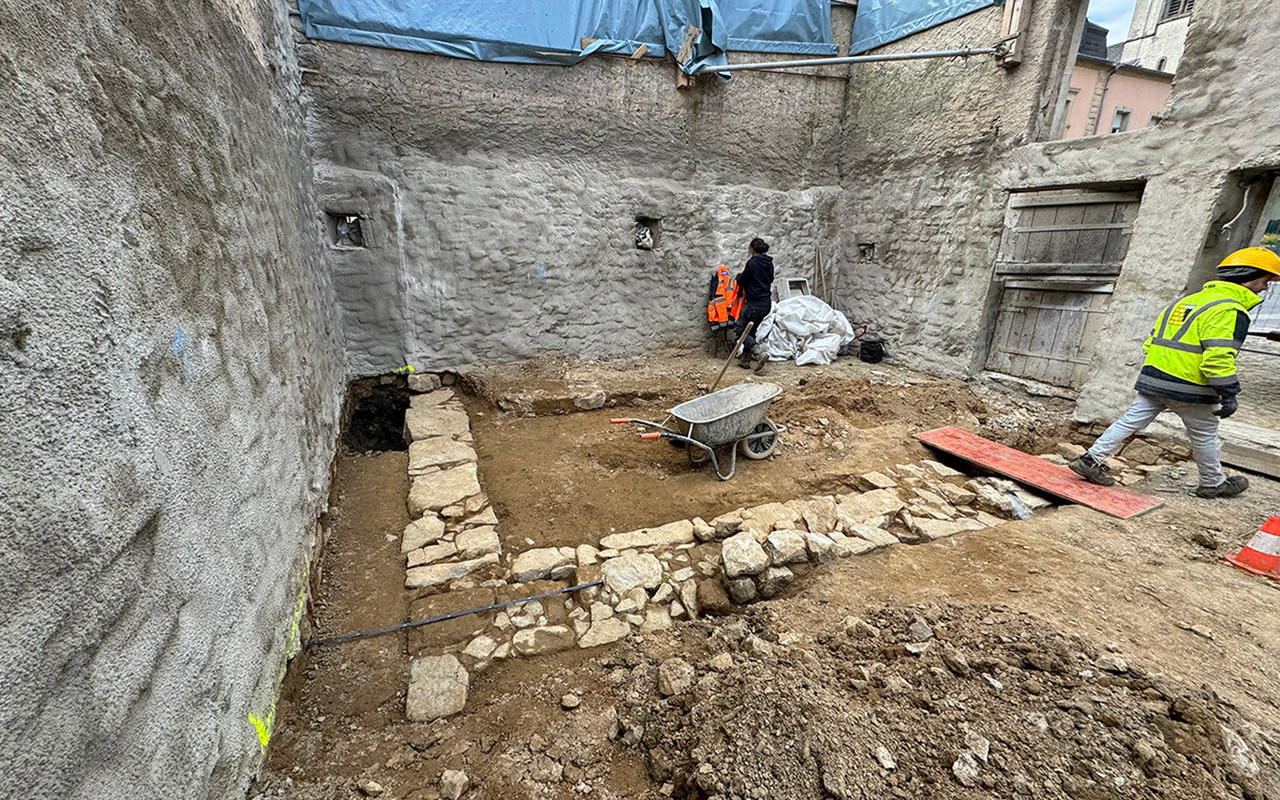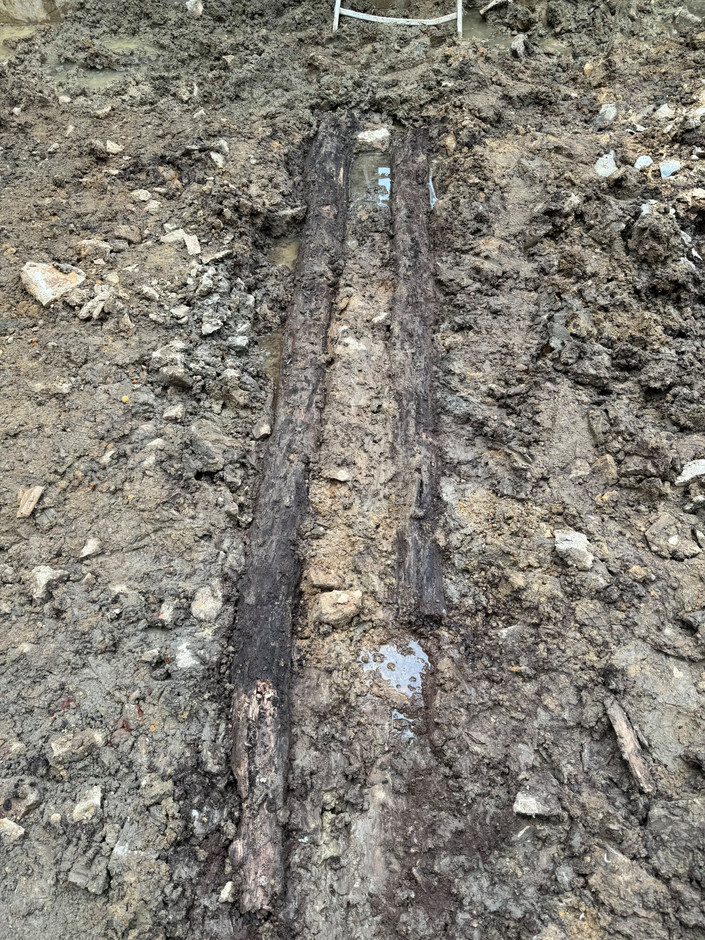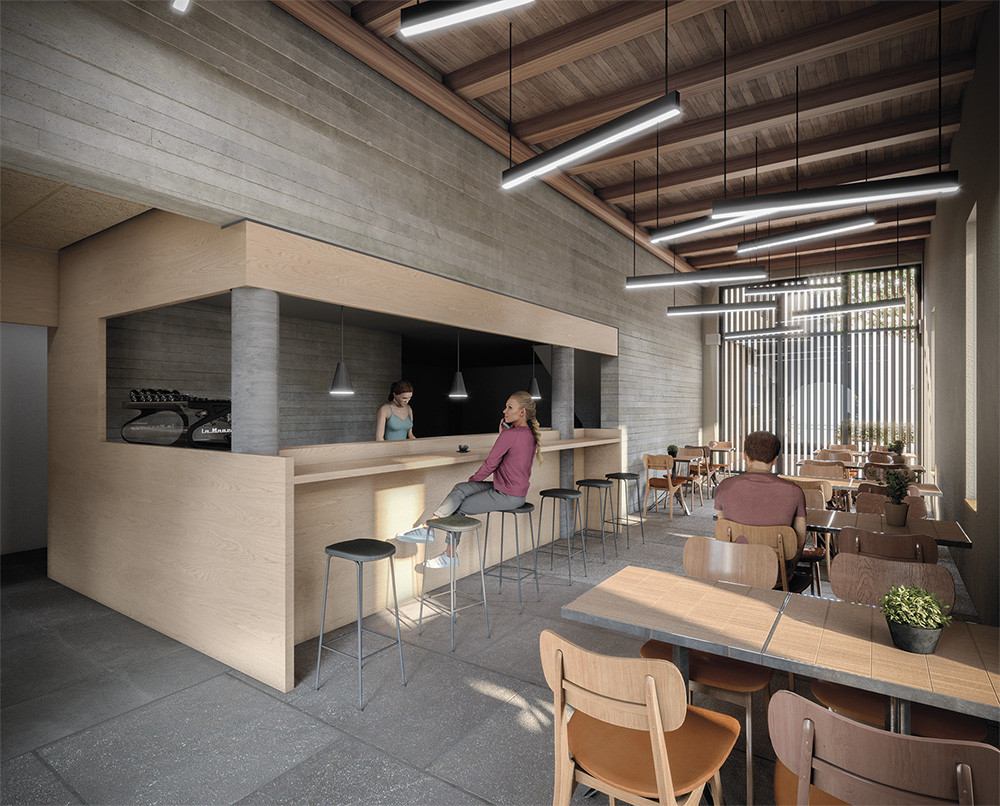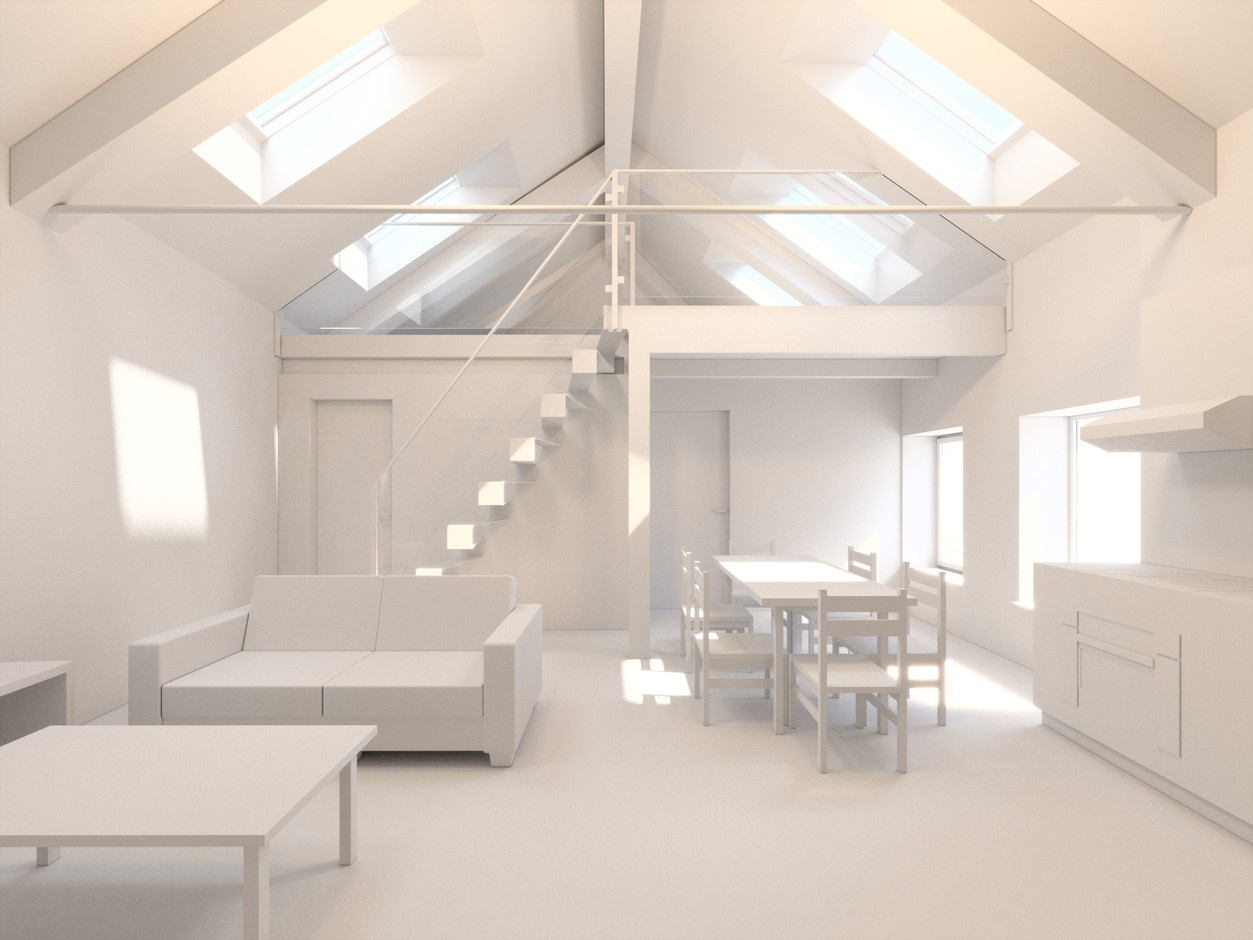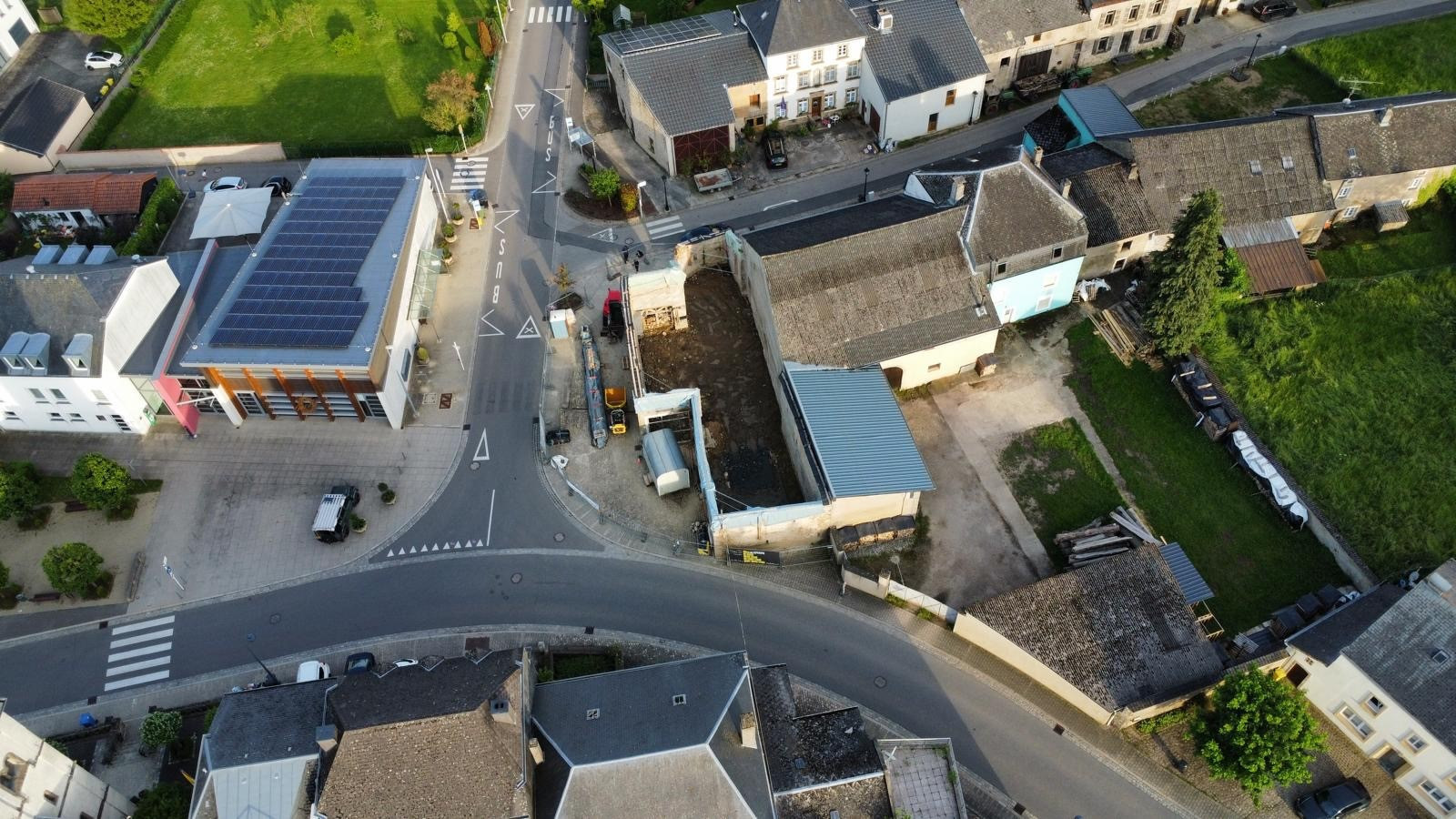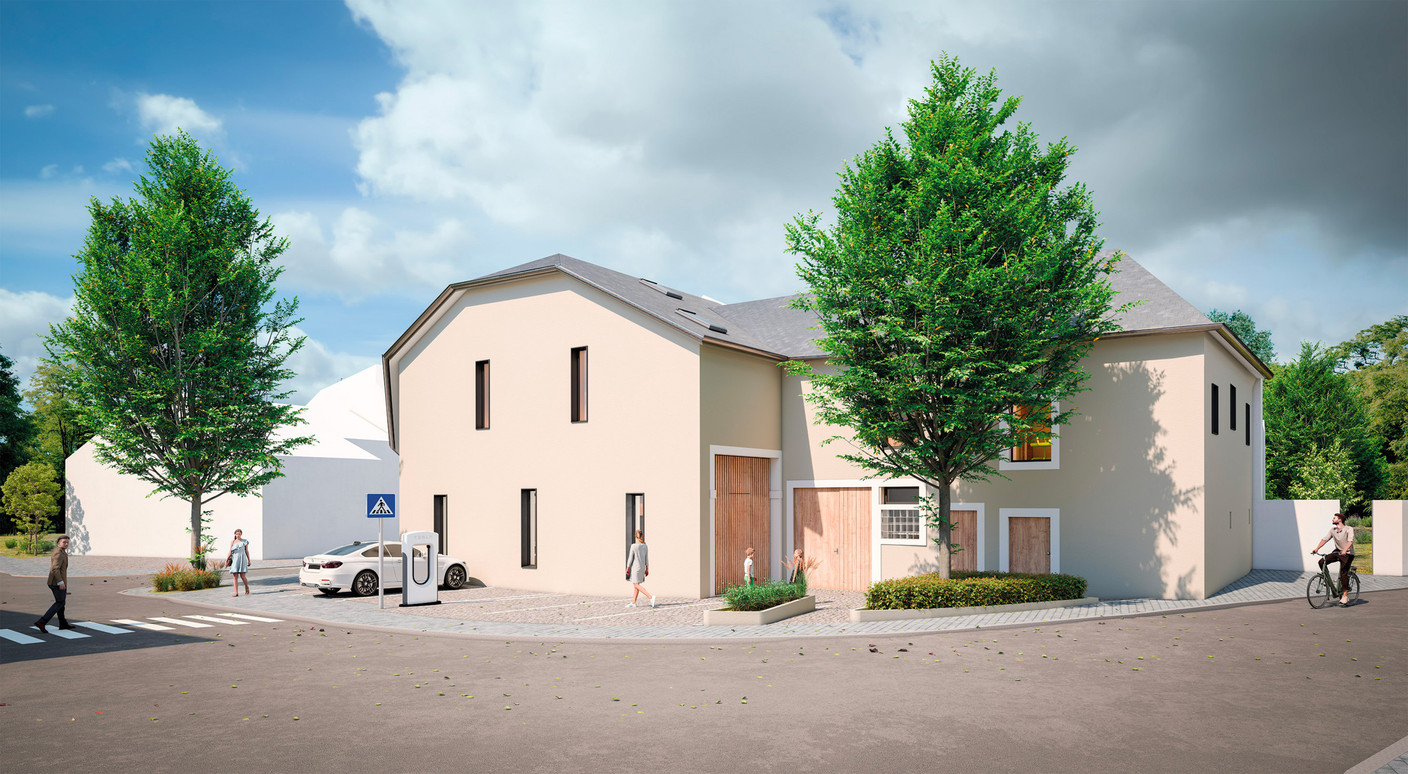The project is an attractive one: transforming an old barn dating from 1822 in the village of Ellange into a new brewery on the ground floor, complemented by two affordable flats on the upper floor. Belvedere Architecture, with the help of HLG Ingénieurs – Conseils and Goblet Lavandier & Associés Ingénieurs-Conseils, has taken on this task on behalf of the municipality of Mondorf-les-Bains, the project owner.
The aim is to reintroduce a convivial meeting place for local residents to this small rural community, while at the same time providing new housing. To achieve this, a large part of the existing building has to be deconstructed, while retaining a number of elements that will be reintegrated into the new project: the stone floor, the structural beams, the historic walls and their openings, etc. The deconstruction of the historic building known as “A Kréiesch” began in 2023, in conjunction with the National Institute for Architectural Heritage (INPA). The exterior will be landscaped with a green area and a number of parking spaces.
A special situation
But this project has another special feature. “The plot of land on which the project is to be built is located in an archaeological observation zone (ZOA),” explains Patrick Meyer, architect and founder of Belvedere Architecture. “There are maps on the Géoportail that determine, based on the cadastral lot, whether the site is located in a potential archaeological zone. This was the case here. So we contacted the National Institute for Archaeological Research (INRA) to inform them of our conversion and construction project.”
When the INRA team is contacted, it analyses the construction project it receives and is able to say quickly (within 30 working days) whether or not the project may have an impact on potential archaeological heritage. “The sooner we submit this request for an archaeological assessment, the better, because we can make any adjustments that are acceptable to all parties, and thus avoid postponing the development work,” explains Christiane Bis, head of the medieval and post-medieval archaeology department at the INRA.
In the majority of cases, the sites do not pose any difficulties and archaeological constraints can be lifted. In other cases, however, it may be necessary to carry out on-site diagnostics or even a preventive excavation.
“Diagnostics are often carried out using trenches, which are dug in the ground to allow better planning in the event of finds. If the situation allows, we can take advantage of surveys carried out for foundations, for example, to include archaeological surveys,” explains Bis.
In the case of Ellange, the process was a little different. “Here, we carried out a monitoring mission during the safety works, which in this case was the most appropriate solution,” says Bis. This approach can be used in the case of underpinning work or in streets that are too narrow. In these cases, the archaeologist works with the site team, and his or her expert eye helps to understand changes on the ground that neither the worker nor the architect is able to assess. “This approach allows us to work smoothly, in discussion, without having to suspend the site indefinitely if any remains are discovered,” adds Lorenz Reiter, project manager for Belvedere Architecture. “This has helped us a lot, because by having the archaeologist at our side, we can immediately determine whether we need to stop or not, whether what we uncover is of value or not.”
It’s important to understand that as long as the remains are in the ground, they are protected. But from the moment they are brought out into the open, they are in danger. “The preservation of structures should always be a priority, because they are an irreplaceable historical source on our past,” adds Bis. “If it proves necessary, however, these testimonies buried in the ground must be excavated according to the rules of the art, documented and thus safeguarded for future generations.”
A financial impact
Making archaeological discoveries on the ground is exciting. At Ellange, under the supervision of Andrea Bischof, archaeologist at INRA, the remains of stone walls, ceramic shards, a large wooden beam and metal fragments were discovered, bearing witness to past activity dating from the end of the 13th century to the 17th century. A scythe and a mobile anvil, for example, were found. These remains have made it possible to understand that before the barn, there was an activity here that had nothing to do with the function currently on the surface.
But carrying out such research also comes at a cost, and can lead to occasional stoppages. “Using one system or another is therefore a case-by-case choice, and the INRA tries to find the best possible variant for each site,” says Bis. “At the moment, we are working under the law of 25 February 2022, which aims to incorporate the ‘polluter pays’ system, which is the rule worldwide. But in the meantime it has become clear that the current law, which provides for 50% reimbursement of costs once all the excavation work and the report have been completed, is sometimes difficult to apply in practice. For this reason, on 25 September 2024, culture minister (DP) submitted a bill amending the 2022 law: all costs will be borne by the state once this amending law is passed at the beginning of 2025. This is a positive measure for landowners, who will then no longer have the financial burden of excavations.”
It’s a demanding but rewarding project. The Ellange project, although relatively modest in scale, nevertheless represented a challenge for both the architects and the archaeologists. Thanks to close and early consultation, and a willingness to work in the same direction and respect each other’s interests, solutions were found and implemented for this particular case. It’s key to be able to rely on site teams who are aware of the issues involved, because work with backhoe loaders, for example, requires greater attention than on a site without an archaeological study.
“Archaeology has a destructive component,” concludes Meyer. “So we have to work with a great deal of expertise and patience. But it’s in the interests of our company and the project, because what might be discovered will also contribute to a better understanding of the site’s history, reinforce the identity of the place and strengthen the population’s attachment to the project.”
This article was written in for the supplement in the magazine, published on 20 November. The content is produced exclusively for the magazine. It is published on the website as a contribution to the complete Paperjam archive. .
Is your company a member of the Paperjam Business Club? You can request a subscription in your name. Let us know via
